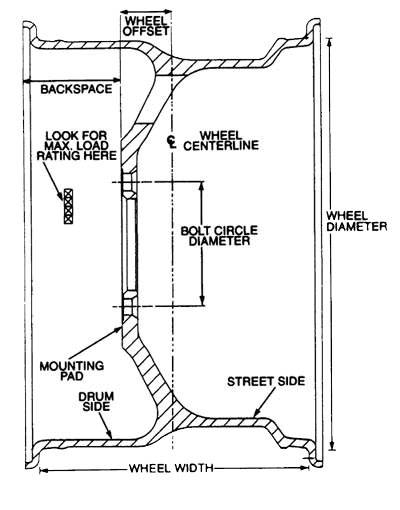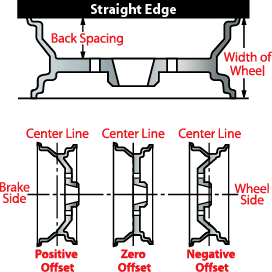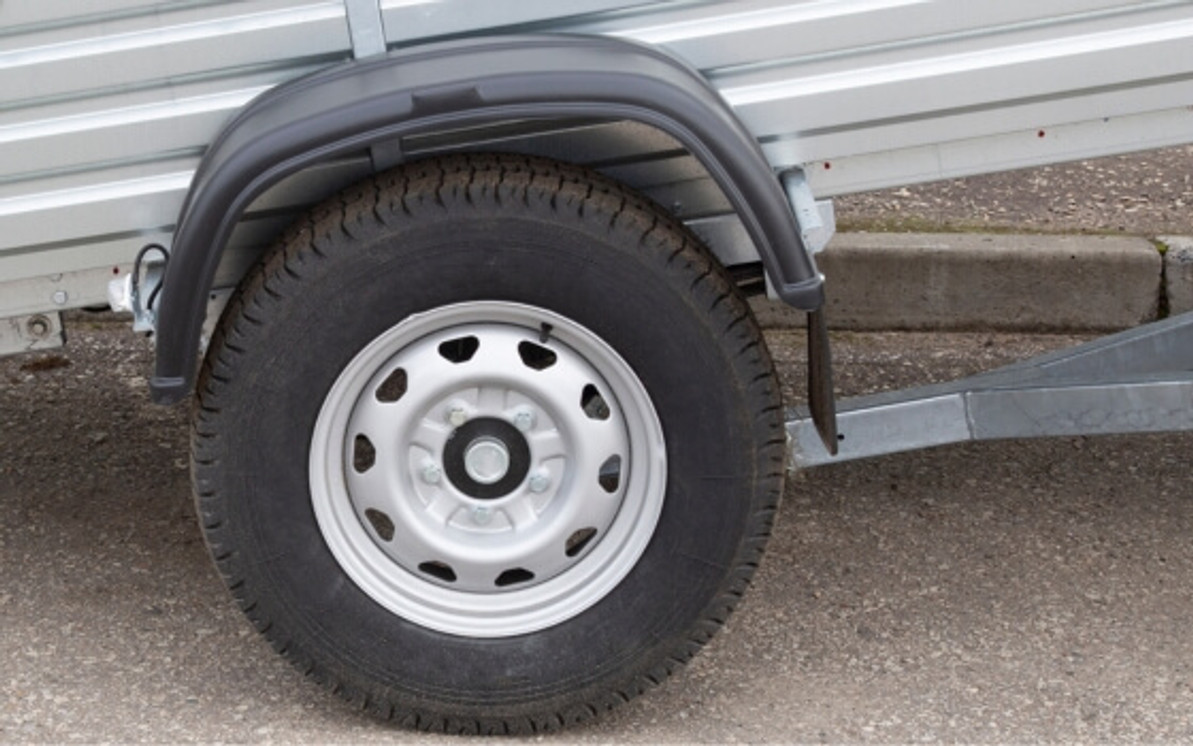The Anatomy of a Trailer Wheel: Understanding the Crucial Components
Trailer wheels may not always be perceived as highly technical components, but they play a vital role in ensuring the smooth and safe operation of your trailer. While the basic functionality of a trailer wheel may seem straightforward, there are several critical aspects of its design that are often overlooked when selecting the best option for your specific application. In this extensive guide, we will delve into the intricate details of a trailer wheel's anatomy, shedding light on the significance of various components and measurements. By understanding these key factors, you can make informed decisions when choosing the right wheels for your trailer, thus enhancing its performance and safety.

1. Wheel Offset: The Distance That Matters
Wheel offset refers to the crucial distance between the wheel's center line and the mounting pad. This measurement plays a pivotal role in determining how the wheel aligns with the trailer's hub and how it interacts with other trailer components. It's important to comprehend the significance of wheel offset as it can greatly affect the functionality and stability of your trailer.
2. Backspace: The Space in the Rear
Backspace is the measurement that matters when you need to know the distance between the mounting pad and the outermost part of the wheel's drum side. In essence, it defines how much space there is between the wheel's inner surface and the hub or brake components. Understanding backspace is crucial in ensuring that your wheel fits perfectly without interfering with other trailer parts.
3. Wheel Center Line: The Heart of the Wheel
The wheel center line is the absolute center of the wheel. It is a fundamental reference point that affects the overall alignment and balance of the wheel on your trailer. Accurate knowledge of the wheel center line is essential to maintain the trailer's stability and avoid issues related to uneven weight distribution.
4. Bolt Circle Diameter: Measuring the Holes
The bolt circle diameter is the measurement of the circle formed by the bolt holes on the wheel. This measurement is significant because it determines the compatibility of the wheel with the trailer's hub and the type of bolts required for installation. Selecting a wheel with the correct bolt circle diameter is essential to ensure a secure fit and prevent any unwanted movement or wobbling.
5. Wheel Diameter: Where Tire Meets Wheel
The wheel diameter represents the size of the wheel where the tire's bead mounts and creates a seal. It is a critical dimension to consider when selecting the appropriate tire for your trailer. A mismatch between the wheel diameter and tire size can lead to issues such as tire blowouts, reduced stability, and compromised safety.
6. Mounting Pad: Bridging the Gap
The mounting pad is the portion of the wheel that interfaces with the hub face. This area is responsible for ensuring a stable connection between the wheel and the hub. It is crucial to have a secure and precise fit of the mounting pad on the hub to prevent any wobbling or misalignment that can lead to accidents and damage.
7. Drum Side: Facing the Trailer Drum
The drum side of the wheel is the part that faces the trailer drum. It is essential to understand the orientation of this side to ensure that the wheel aligns correctly with the trailer's braking system. Proper alignment with the drum side is essential for effective and safe braking performance.
8. Street Side: The Visible Face
The street side of the wheel is the visible side when the wheel is correctly mounted. It affects the overall appearance of the trailer and can be a crucial factor for those who prioritize aesthetics. Ensuring that the street side is well-aligned and visually appealing is important for trailers used in public or commercial settings.
Positive Offset vs. Negative Offset: Making the Right Choice

Wheel offset can significantly impact the performance and safety of your trailer. It refers to the position of the wheel's mounting pad in relation to the wheel's center line. There are three main categories of wheel offset: positive offset, zero offset, and negative offset. Understanding the differences between these offsets is vital when selecting the right wheel for your trailer.
1. Positive Offset: Maximizing Space on the Drum Side
Positive offset wheels have their mounting pads adjusted away from the drum or brake side of the wheel's center line. This configuration provides more space between the wheel and the drum, making it ideal for trailers with larger drum components. Positive offset wheels are often used in heavy-duty applications where there is a need for ample clearance between the wheel and braking system.
2. Zero Offset: Perfect Alignment
Zero offset wheels have their mounting pads in line with the wheel's center line. This configuration ensures that the wheel is perfectly centered and aligned with the trailer's hub. Zero offset wheels are commonly used in standard applications where maintaining a balanced and symmetrical alignment is crucial.
3. Negative Offset: Maximizing Space on the Street Side
Negative offset wheels have their mounting pads adjusted away from the street or wheel side of the wheel's center line. This configuration creates more space between the wheel and the outer edge of the tire. Negative offset wheels are often chosen for trailers with larger tires or in situations where additional clearance on the street side is required.
The Importance of Offset Selection
The choice between positive, zero, or negative offset is a critical decision that can impact the overall performance and safety of your trailer. Selecting the appropriate offset ensures that the wheel aligns correctly with the trailer's hub, brake system, and tire size. Failing to consider offset can lead to compatibility issues, uneven weight distribution, reduced stability, and even safety hazards. Therefore, it is essential to understand the specific requirements of your trailer and choose the offset that best suits your application.
How to Determine the Right Wheel for Your Trailer
Now that we've explored the various components and measurements that make up a trailer wheel's anatomy, it's crucial to know how to use this knowledge effectively when selecting the right wheel for your trailer. Here are the steps to guide you through the process:
1. Measure Your Trailer's Hub
Start by measuring your trailer's hub dimensions accurately. This includes determining the bolt circle diameter and the center hole diameter. These measurements are essential for ensuring a secure and compatible fit between the wheel and the hub.
2. Assess Your Trailer's Brake System
Consider the type and size of your trailer's brake system. If your trailer has larger drum components, you may need a wheel with a positive offset to provide the necessary clearance. On the other hand, if your trailer has larger tires or specific clearance requirements, a negative offset wheel may be more suitable.
3. Evaluate Your Tire Size
The size of the tires you plan to use on your trailer is a crucial factor in wheel selection. Make sure the wheel's diameter is compatible with the tire size to prevent issues such as tire blowouts or poor handling.
4. Determine the Aesthetic Considerations
If the appearance of your trailer is important to you, consider the street side of the wheel. Ensure that the wheel you choose aligns with your desired visual aesthetic, especially if your trailer is for public or commercial use.
5. Verify the Offset
Carefully select the offset that best suits your trailer's requirements. This decision is crucial for achieving the desired clearance and alignment with the hub, brakes, and tires. Remember that positive, zero, and negative offsets each serve specific purposes, so choose accordingly.
6. Seek Professional Guidance
If you are unsure about any of the measurements or requirements, don't hesitate to seek professional advice. Consult with a trailer specialist or wheel manufacturer to ensure that your wheel selection aligns with
Recent Posts
-
Lawn and Garden Tire Information
Spring is here, which means it's time to bring out the lawn tractor and get the yard ready for warme …Mar 24th 2025 -
Snowmobile Trailer Tips
When the snow starts to fall, you may be itching to hop on your sled and hit the trails. However, be …Jan 6th 2025 -
Keep Your Golf Cart on Course - A Guide to Golf Cart Maintenance
Golf carts are a useful and convenient mode of transportation for leisure and for work …Sep 30th 2024




